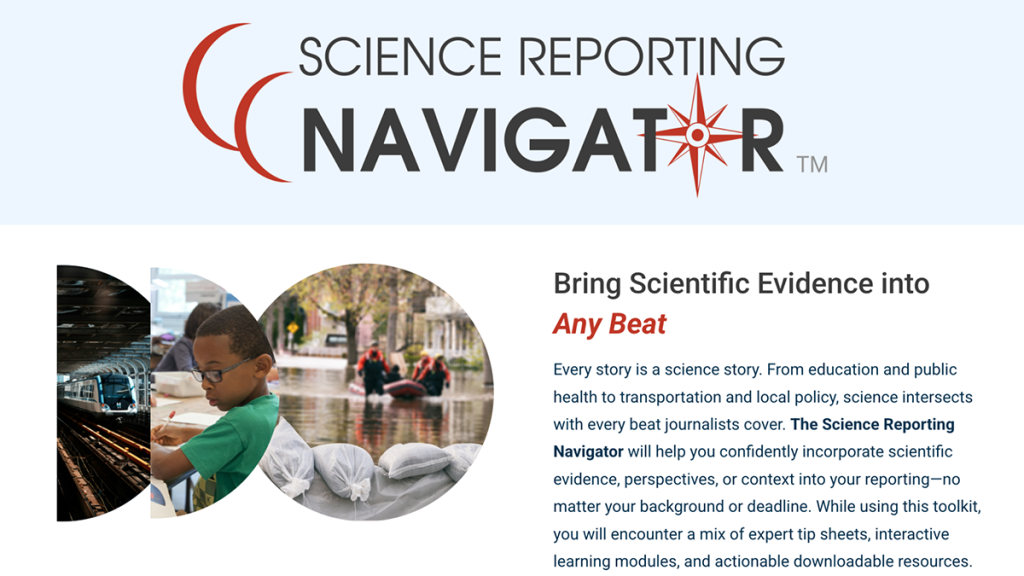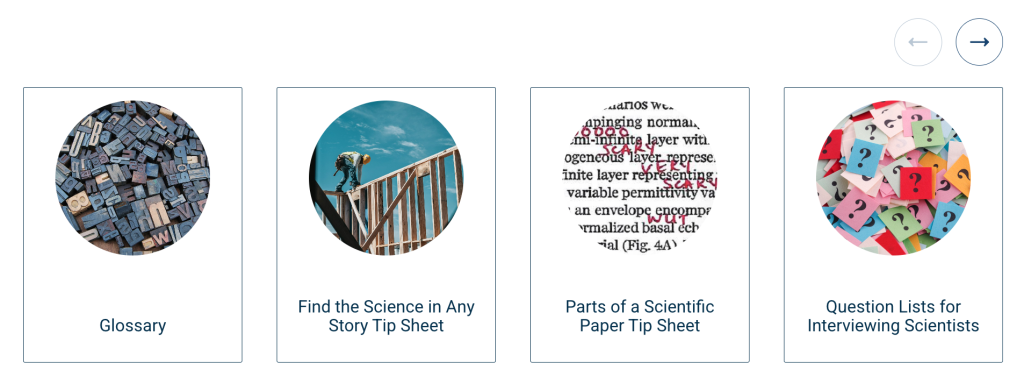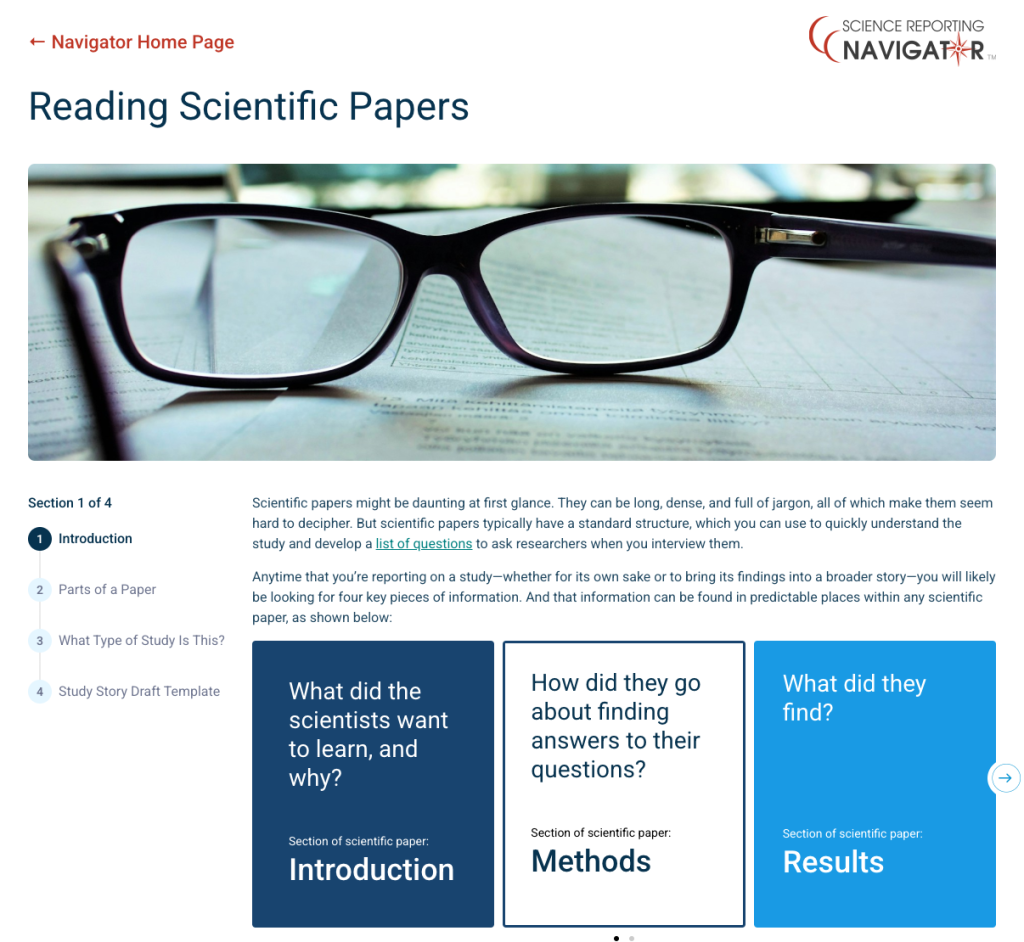
Preview of the home page of the Science Reporting Navigator
Introducing the Science Reporting Navigator
Use the navigator to help you integrate science into any story
The Science Reporting Navigator stands ready to walk you through complex reporting scenarios to integrate science into any beat. The Open Notebook and the Reynolds Journalism Institute are thrilled to announce the launch of this interactive toolkit, designed specifically with local and community reporters in mind.
Local journalism plays an integral part in informing the public and dispelling misinformation. Yet there’s a common misconception that covering science falls solely under the purview of reporters with a background in science who write for niche outlets. This artificial divide between science journalism and the rest of journalism weakens the industry to the detriment of the communities we serve.
If you’re emailing a scientist, you’ll find an email template ready to copy, paste, and customize. If you’re reporting on a new study, you can complete a worksheet to help you construct a rough draft with the key elements in place.
With the help of the Science Reporting Navigator, you’ll learn how to access and digest scientific papers, find and interview researchers with relevant expertise, and interrogate scientific claims. And if you want to dig deeper, you can explore how to analyze scientific data relevant to your story, decipher statistical terms, cover controversial science, and more.
Our goal is to make it doable—and even easy—for journalists on any beat to incorporate scientific evidence into the stories they’re already reporting for their communities. As a result of this nuanced reporting, audiences are better informed about the issues they care about most.
The information in the navigator distills our vast archives into interactive lessons designed to deliver key points quickly—so journalists can get what they need, even for quick-turn stories.
You can choose how you navigate through the toolkit by selecting one of three options that best suits your needs:
- Follow a learning path: Journalists can select one of six scenarios that aligns with their work and walk through a series of lessons addressing those reporting needs. This is the fastest way to get practical, immediate support for your stories.
- Explore by topic: If you have a little more time or prefer to explore on your own, you can browse through all ten lessons available in this toolkit and choose where you want to strengthen your skills. Dive into the lesson on covering fast-changing science, for example, to learn how to cover preliminary research with the right dose of caution. Or open the navigating data lesson for a primer on finding stories within scientific data.
- Browse our resource library: Our lessons are packed with downloadable templates, worksheets, and checklists. Choose this option to quickly access a helpful resource for a specific task. If you’re emailing a scientist, you’ll find an email template ready to copy, paste, and customize. If you’re reporting on a new study, you can complete a worksheet to help you construct a rough draft with the key elements in place. The resource library also includes a searchable glossary of key terms defined throughout in the toolkit.

We hope the Science Reporting Navigator illustrates the vital importance of including scientific evidence in stories and empowers journalists to do so accurately and confidently.
We’d love for you to join us for a demo webinar October 23 at 2 p.m. CT where we will showcase the different ways journalists can utilize the navigator.
Many thanks to our team who helped make this project possible, including especially Kate Fishman and our design and development partner, Relief Applications.
Cite this article
Zamzow, Rachel; and Carpenter, Siri (2025, Sept. 29). Introducing the Science Reporting Navigator. Reynolds Journalism Institute. Retrieved from: https://rjionline.org/news/introducing-the-science-reporting-navigator/




